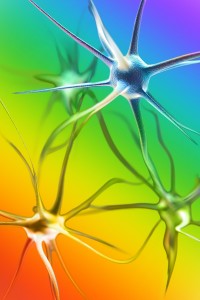Sexual Orientation, Controversy, and Science
Psychological Science in the Public Interest (Volume 17, Number 2)
Read the Full Text (PDF, HTML)

Over the last 50 years, political rights for lesbian, gay, and bisexual (LGB) individuals have significantly broadened in some countries, while they have narrowed in others. In many parts of the world, political and popular support for LGB rights hinges on questions about the prevalence, causes, and consequences of non-heterosexual orientations.
In this report (Volume 17, Number 2), J. Michael Bailey and colleagues bring the latest science to bear on these issues, providing a comprehensive review of the scientific research on sexual orientation that corrects important misconceptions about the link between scientific findings and political agendas.
Based on their review of the latest science, Bailey and colleagues draw several conclusions about the nature of sexual orientation:
- Across cultures, a “small but nontrivial” percentage of people have non-heterosexual feelings. The specific expression of sexual orientation varies widely according to cultural norms and traditions, but research suggests that individuals’ sexual feelings are likely to develop in similar ways around the world.
- Men’s and women’s sexual orientations manifest in different ways: Men’s sexual orientation is more closely linked to their patterns of sexual arousal than women’s sexual orientation is.
- Various biological factors—including prenatal hormones and specific genetic profiles—are likely to contribute to sexual orientation, though they are not the sole cause. Scientific evidence suggests that biological and non-social environmental factors jointly influence sexual orientation.
- Scientific findings do not support the notion that sexual orientation can be taught or learned through social means. And there is little evidence to suggest that non-heterosexual orientations become more common with increased social tolerance.
Despite these points of consensus, some aspects of sexual orientation are not as clear-cut. Commentator Ritch Savin-Williams (Cornell University) argues that considerable evidence supports a sexual continuum, in contrast to the more categorical perspective taken by Bailey and colleagues. Savin-Williams notes that the label ‘bisexual’ serves as a catchall for diverse sexual orientations that fall in between heterosexual and homosexual. As a result, Savin-Williams estimates the prevalence of the nonheterosexual population to be double the estimate produced by Bailey and colleagues.
Sexual Orientation: Categories or Continuum?
By Ritch Savin-Williams, Cornell University
From their review, the authors also conclude that gender nonconformity in childhood—behaving in ways that do not align with gender stereotypes—predicts non-heterosexuality in adulthood. According to Savin-Williams, the degree to which this is true could be a consequence of how study participants are typically recruited and may not be accurate among more representative samples of nonheterosexual individuals.
The report authors and Savin-Williams agree on most issues, including that a major limitation of existing research relates to how sexual orientation is measured. Most researchers view sexual orientation as having several components—including sexual behavior, sexual identity, sexual attraction, and physiological sexual arousal—and yet, the majority of scientific studies focus solely on self-reported sexual attraction. The decision to use these self-report measures is typically made for pragmatic reasons, but it necessarily limits the conclusions that can be drawn about how different aspects of sexual orientation vary by individual, by culture, or by time.
Additionally, individual and cultural stigma likely results in underreporting of non-heterosexual behaviors and orientations across the board.
Perhaps the most prominent question in political and public debates is whether people can “choose” to have non-heterosexual orientations. Because sexual orientation is based on desire and we do not “choose” our desires, the authors argue, this question is illogical.
The fact that issues related to sexual orientation continue to be hotly debated in the public arena underscores the need for more and better research. All of the researchers agree that sexual orientation is an important human trait that should be studied without fear, and without political constraint.





Comments
The paper sensibly states that “A more comprehensible basis upon which people differ in their moral and political responses to homosexuality is in their beliefs about its consequences rather than its causes…These grounds— rather than questions of causation and choice—are the appropriate grounds on which the battle for equal rights for nonheterosexual people should be fought.”.(Page 62). This does not mean a hatred fight between opposing parties. Rather, it signifies the importance of conducting thorough analyses of the various consequences (intended and unintended) of our proposed policies and implementations. Policies and implementations that rely on division, hatred, arrogance, pride, and desires do not bring much benefit personally as well as socially. Sexual expressions are personal as well as social phenomenon, the consequences of which should be holistically assessed as an open system, not only as individual-level phenomenon.
“Sexual expressions are personal as well as social phenomenon, the consequences of which should be holistically assessed as an open system, not only as individual-level phenomenon.”
How would the holistic versus individual assessment really differ in effect, if performed humanistically?
What we don’t know is not surprising. It however is surprising that a segment of the scientific community would admit it. I think it is both curious and political that the social element is so quickly dismissed. Most science is politically motivated.
Social factors have little if any affect on non heterosexual behaviour which is why it is not emphasised more. The idea of sexual identity from culture is an inherently ideological one and is exactly the political element the authors were addressing.
APS regularly opens certain online articles for discussion on our website. Effective February 2021, you must be a logged-in APS member to post comments. By posting a comment, you agree to our Community Guidelines and the display of your profile information, including your name and affiliation. Any opinions, findings, conclusions, or recommendations present in article comments are those of the writers and do not necessarily reflect the views of APS or the article’s author. For more information, please see our Community Guidelines.
Please login with your APS account to comment.